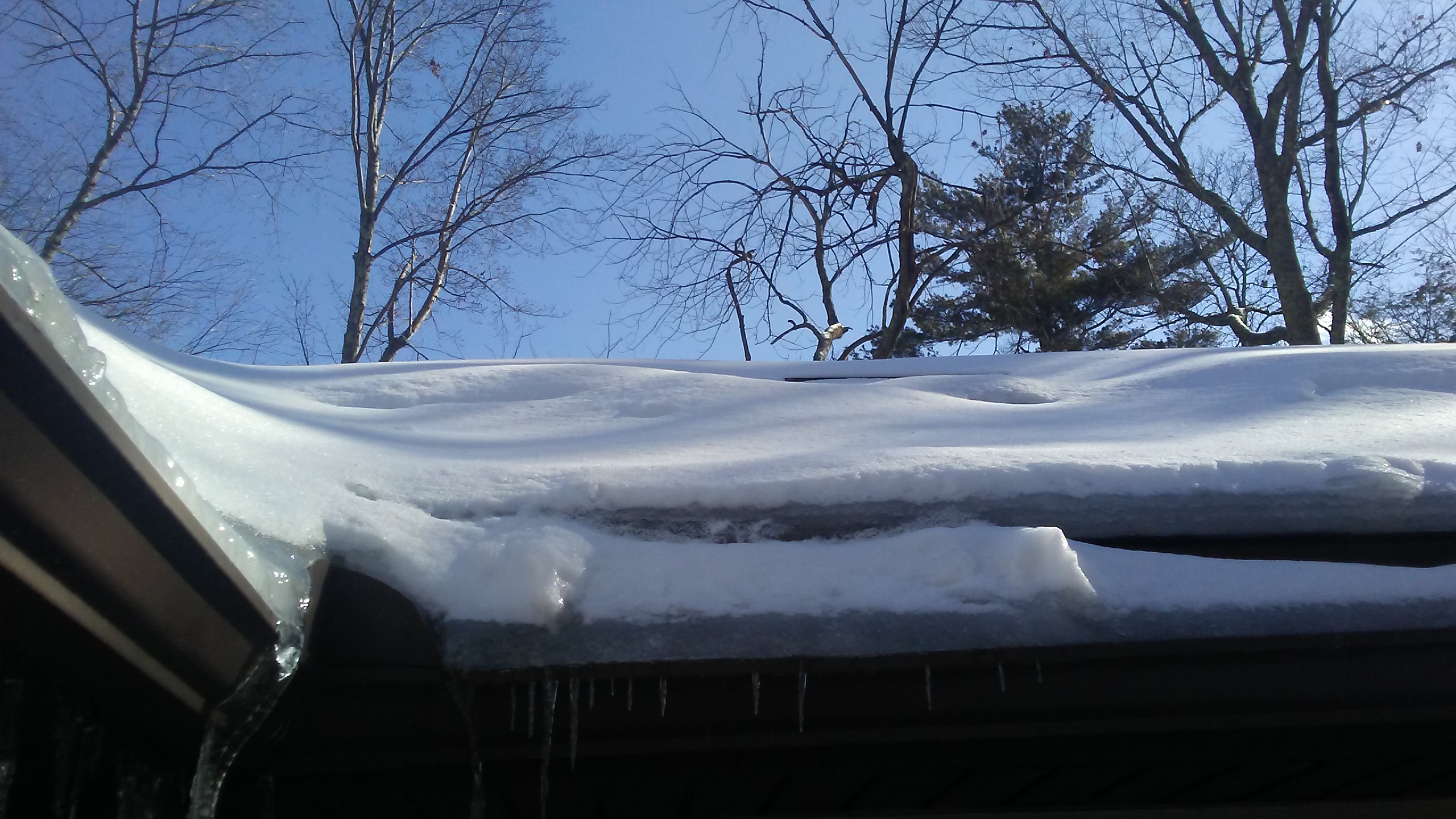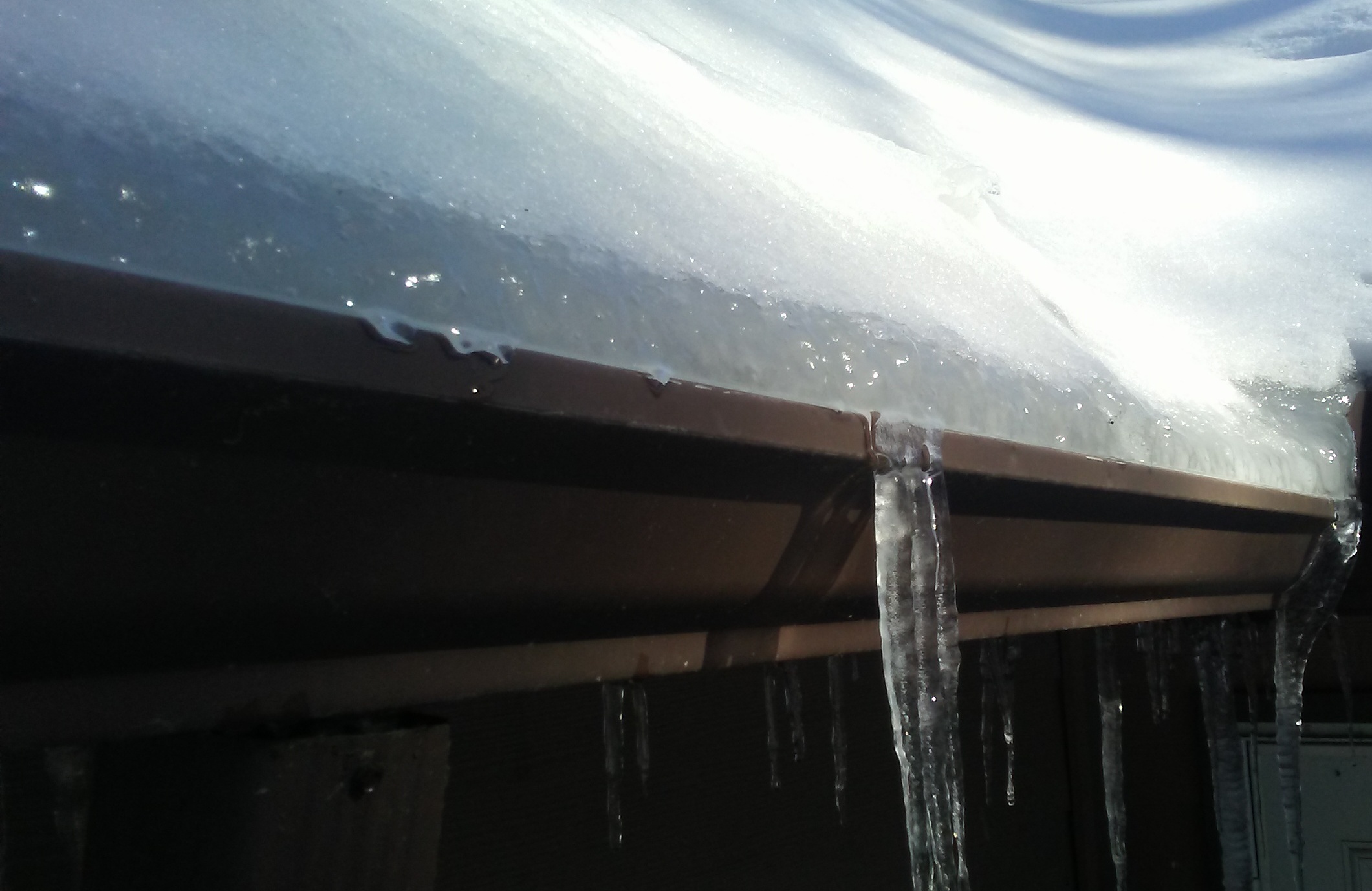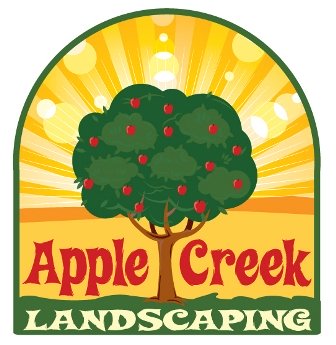Ice Dam: Apple Creek Advice
While an ice dam can form on your roof during any snowstorm, they are most likely to form after a very heavy snowfall, when you have days or weeks of melt and refreeze cycles, or when the angle of the sun is higher, as in late winter and early spring.
Ice dams and frozen pipes can cause significant damage to your house if not discovered early.
How Do Ice Dams Form?
During the day heat from the
sun, as well as heat from inside your home radiating up through the roof, melts some of the
snow and the water runs down under the snow to the surface of your
roof. From there it makes its way to your gutters, or just drips off the roof's edge.
At night as temperatures drop, the water from melting snow refreezes in your gutter or on the roof surface when the sun goes down and temperatures dip back below freezing.
Over time the ice can build up in and block your gutter, which stays colder than your roof, so that melt water can no longer drain away from the surface of the roof.
If the gutters are blocked with ice, melt water may run into your soffits behind the gutters & make it's way to the home's interior.
When ice forms on the roof it expands. Ice expansion can force the ice under shingles or roof tiles. If the sheathing under the roofing materials is above freezing, the ice can melt and leak into the home's interior.
March is always a turbulent weather month. Snow one day & high temperatures in the 60s the next. The average high temperature in Lakeville on March 10th is 40 degrees Fahrenheit. The average low is 23 degrees.
Weather Underground reports that the record high was 77 degrees in 1977 and the record low was -5 in 1984.
The higher sun angle in late winter and early spring melts more snow on roofs than say during a January storm. So early or late season storms with a lower total snow accumulation can actually cause more ice dams.
Why does it matter?
Now you are wondering what difference it makes if you have ice on your roof. Icicles are pretty so why can't you just leave them alone?
When ice dams form under the snow (or just by themselves during an ice storm), water can't drain off your roof like it normally would.
In the images on this page you can clearly see a line of ice under the snow at the gutter. However, sometimes you can't see anything but icicles.
If you have a clay tile, asphalt or slate shingle roof, the water can back up under the shingles and leak into your home. This can cause damage to walls, ceilings and hardwood floors or mold and mildew growth.
Metal roof owners do not always escape unscathed. The metal has joints and seams where water can make its way in to the interior of a building when it cannot drain off.
What can you do about an ice dam?
Raking snow from the lower 1 or 2 feet of roof will usually prevent ice from building up. That said, not everyone physically able, has the time or can convince their kids to do it. Apple Creek does not rake roofs either.
To help prevent ice dams a simple thing you can do is make sure your gutters are clear of leaves & debris and that the leader outlets are not blocked with leaves or snow. This will keep the melt water moving.
Also, many home improvement and hardware stores carry ice melting products that are safe for use on roof shingles. These can be used either as a pre-treatment to prevent ice buildup or as a way to melt a dam that has already formed.
Warning: Both sodium chloride (table salt) and calcium chloride (common ingredient in ice melt products) are corrosive & should not be used on your roof or in your gutters.
Beware of using any product with "chloride" in the name, as that means it is a form of salt. Salts can leave a white, chalky residue of surfaces and damage ornamental landscaping plants.
Products that are advertised as safe for pets or that have beet extract as an ingredient should be safe.
Check the roofing manufacturer's website to see if they have any recommendations or warnings.
Seasonal or Vacation Homes
What if your home is vacant during the winter months? While snowbirds are down south basking in the sun, what is happening to their Pocono vacation home?
This is when a professional home watch service can be of assistance. Not only do they look for evidence of ice dam formation and interior leaks during regular or post storm inspections, they may also offer roof raking as a complimentary or concierge service.
If your property is located in the Lake Wallenpaupack area check out Roe Property Services.
For those of you with a home in the Elk Lake or Elk Mountain area of NEPA, Assurance Home Watch NEPA can help you out.
More information
Not every roof has shingles or gutters but they can still develop ice dams. There are many products available the purport to prevent an ice dam.
Here are links to some other information that you may find useful.
Preventing Ice Dams - This Old House
Prevent and Remove Ice Dams - Travelers Insurance
Icicles - The Farmer's Almanac







